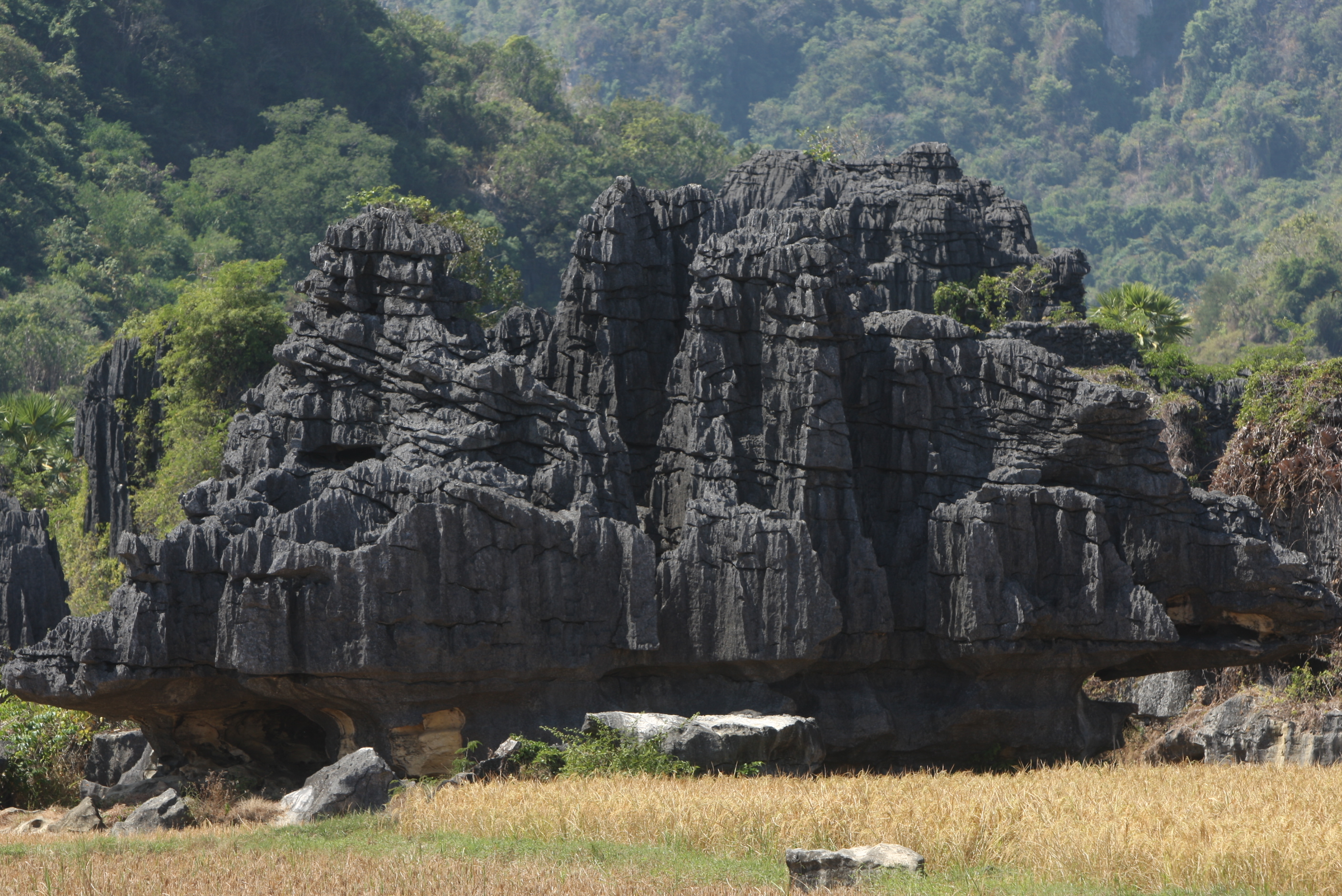World's oldest cave art, including famous hand stencils, being erased by climate change
The island of Sulawesi in Indonesia is home to cave art dating back more than 45,000 years.

Some of the world's earliest cave art, including the oldest-known hand stencil drawing, is degenerating at an "alarming rate" due to climate change, according to a new study.
The island of Sulawesi in Indonesia is home to cave art dating back more than 45,000 years. The ancient cave paintings include depictions of animals, mixed human and animal figures, hand stencils drawn in red and mulberry pigments, and what is possibly the earliest known narrative scene in prehistoric art.
For instance, in the Leang Tedongnge cave in the Maros-Pangkep region of Sulawesi, researchers have found hand stencil art dating back 39,900 years and rock art showing a warty pig that is at least 45,500 years old.
Related: In photos: The world's oldest cave art
The Maros-Pangkep region is home to 300 different limestone cave art sites. Since the 1950s, archaeologists have reported anecdotally that the ancient paintings, which have survived for tens of thousands of years, have been "blistering and peeling off the cave walls," the study authors wrote in The Conversation.
"Cave paintings in Sulawesi and Borneo are some of the earliest evidence we have that people were living on these islands," they wrote. "Tragically, at almost every new site we find in this region, the rock art is in an advanced stage of decay."
But the reasons for this weren’t clear, so the team decided to investigate by analyzing some of the oldest-known examples — dating to between 20,000 and 40,000 years ago — in 11 different sites in the region.
Sign up for the Live Science daily newsletter now
Get the world’s most fascinating discoveries delivered straight to your inbox.
Using a variety of techniques that included powerful microscopes, chemical analyses and crystal identification, the researchers discovered traces of salts across the caves. They found calcium sulfate and sodium chloride in flakes of rock at three of the 11 sites and high levels of sulfur, which is a component of salts, at all of the sites, suggesting that salt deposits may be driving the deterioration, according to a statement.
High humidity or high temperatures are conducive to the formation of salt crystals; salt is carried by water in the air, and once the water evaporates, the salt is left behind as a deposit on or below the rock surface. The salt deposits expand and contract as the surrounding environment heats and cools, causing repetitive strain on the rock, the authors wrote in the paper. Some salt deposits can expand to three or more times their original size when heated.
This repeated strain eventually causes the rock to crack and flake off.
Climate extremes
The findings suggest that over the past four centuries at least the Maros-Pangkep rock art has increasingly deteriorated, and over the last 40 years that erosion has rapidly accelerated due to human-caused climate change, according to the paper.
"Australasia has an incredibly active atmosphere, fed by intense sea currents, seasonal trade winds and a reservoir of warm ocean water," the authors wrote in The Conversation. "Yet, some of its rock art has so far managed to survive tens of thousands of years through major episodes of climate variation, from the cold of the last ice age to the start of the current monsoon."
But climate change is now "magnifying climatic extremes," they wrote. Higher ambient temperatures and more severe and frequent extreme weather events are accelerating the changes in temperature and humidity that induce salt formations, according to the statement.
"The rising frequency and severity" of the droughts caused by the climate cycle called El Niño and moisture build-up from monsoon rains in nearby areas "provide ideal conditions" for evaporation, salt formation and the weathering of cave surfaces holding the ancient art, the authors conclude in the paper.
Not counting the threat from industrial quarrying of limestone, "loss of the painted limestone 'canvas' from salt efflorescence [formation] enhanced by El Niño conditions is the most pressing threat to rock art preservation in this region," the authors wrote in the paper, published May 13 in the journal Scientific Reports.
They call for more conservation, monitoring and research to be done at these sites. "The exceptionally old cave art of Indonesia is located within a dynamic tropical environment that renders it particularly vulnerable to the destructive impacts of climate change, adding unique urgency to this call for further research," they wrote in the paper.
Originally published on Live Science.

Yasemin is a staff writer at Live Science, covering health, neuroscience and biology. Her work has appeared in Scientific American, Science and the San Jose Mercury News. She has a bachelor's degree in biomedical engineering from the University of Connecticut and a graduate certificate in science communication from the University of California, Santa Cruz.










